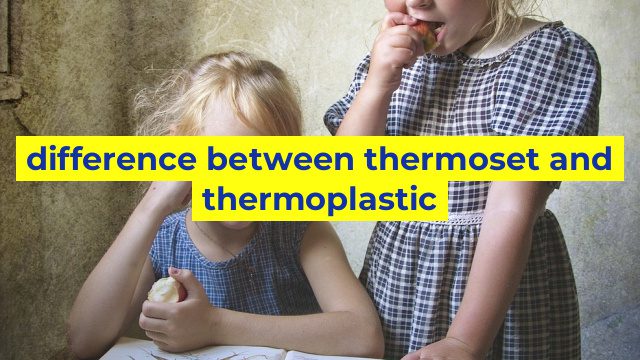The Fundamental Differences Between Thermoset and Thermoplastic
Plastic is perhaps one of the most versatile materials that we use in our daily lives. It is present in various forms and serves a multitude of purposes. However, not all plastics have the same properties and characteristics. Two primary types of plastics are thermoset and thermoplastic. While they may sound similar, there are significant differences between the two that one needs to know before choosing the right material for their application.
What are Thermoplastics?
Thermoplastics are a class of polymers that can be melted and re-molded multiple times without deteriorating their physical properties. They have long linear polymer chains that are more flexible and therefore have a higher degree of elasticity. Common examples of thermoplastics are polyethylene, polypropylene, PVC, and polycarbonate. They are widely used in applications such as packaging, automotive components, medical devices, and 3D printing.
What are Thermosets?
Thermosets, on the other hand, are a class of polymers that undergo a chemical change when exposed to heat, pressure, or other curing agents. This process causes them to undergo a “curing” or cross-linking reaction which leads to the formation of a rigid, inflexible, and irreversible solid state. Once cured, thermosets cannot be melted or re-molded, and their physical properties cannot be altered. Common examples of thermosets are epoxy, polyester, and phenolic resins. They are widely used in applications such as automotive, aerospace, electronics, and construction.
Key Differences
While both thermosets and thermoplastics are used widely in various industries, they have significant differences that set them apart. Firstly, thermoplastics can be melted and re-molded multiple times, whereas thermosets cannot be re-melted once they are cured. Secondly, thermoplastics have a higher degree of elasticity and can deform under applied pressure without breaking, whereas thermosets are rigid and brittle and cannot be deformed under pressure. Thirdly, thermoplastics have lower melting points, making them easier to process through molding or 3D printing.
Choosing the Right Material
When choosing the right material for an application, it is crucial to consider the specific requirements of the product. For example, if flexibility and re-molding capability are critical, thermoplastics such as polypropylene or PVC would be suitable choices. Whereas, for applications where strength and rigidity are essential, thermosets such as composite materials would be ideal.
In conclusion, both thermoplastics and thermosets have their unique properties and applications. While they may seem similar, it is essential to understand their key differences before choosing the right material for any given application. Careful consideration and analysis of material properties are critical to ensure the best performance and longevity of the product.
Table difference between thermoset and thermoplastic
| Parameters | Thermoset | Thermoplastic |
|---|---|---|
| Definition | A type of polymer that irreversibly cures or hardens when it is heated, typically with the addition of a catalyst or hardener. | A type of polymer that softens when it is heated and hardens again when it is cooled. It can be subjected to multiple heating and cooling cycles without any damage. |
| Structure | Has a cross-linked or network structure due to the chemical bonding of monomers. | Has linear or branched chains of polymers held together by weak Van der Waals forces or hydrogen bonding. |
| Strength | High mechanical strength, hardness, and dimensional stability. | Less mechanical strength and hardness than thermoset. |
| Elasticity | Low elasticity and flexibility. | High elasticity and flexibility. |
| Melting Point | Does not have a melting point, instead, it decomposes when heated. | Has a melting point, which allows it to be molded and reshaped. |
| Uses | Used in applications that require high heat resistance, chemical resistance, and electrical insulation. Examples include aircraft components, automotive parts, and electrical equipment. | Used in applications that require flexibility, impact resistance, and can be molded into various shapes. Examples include toys, packaging materials, and pipes. |

